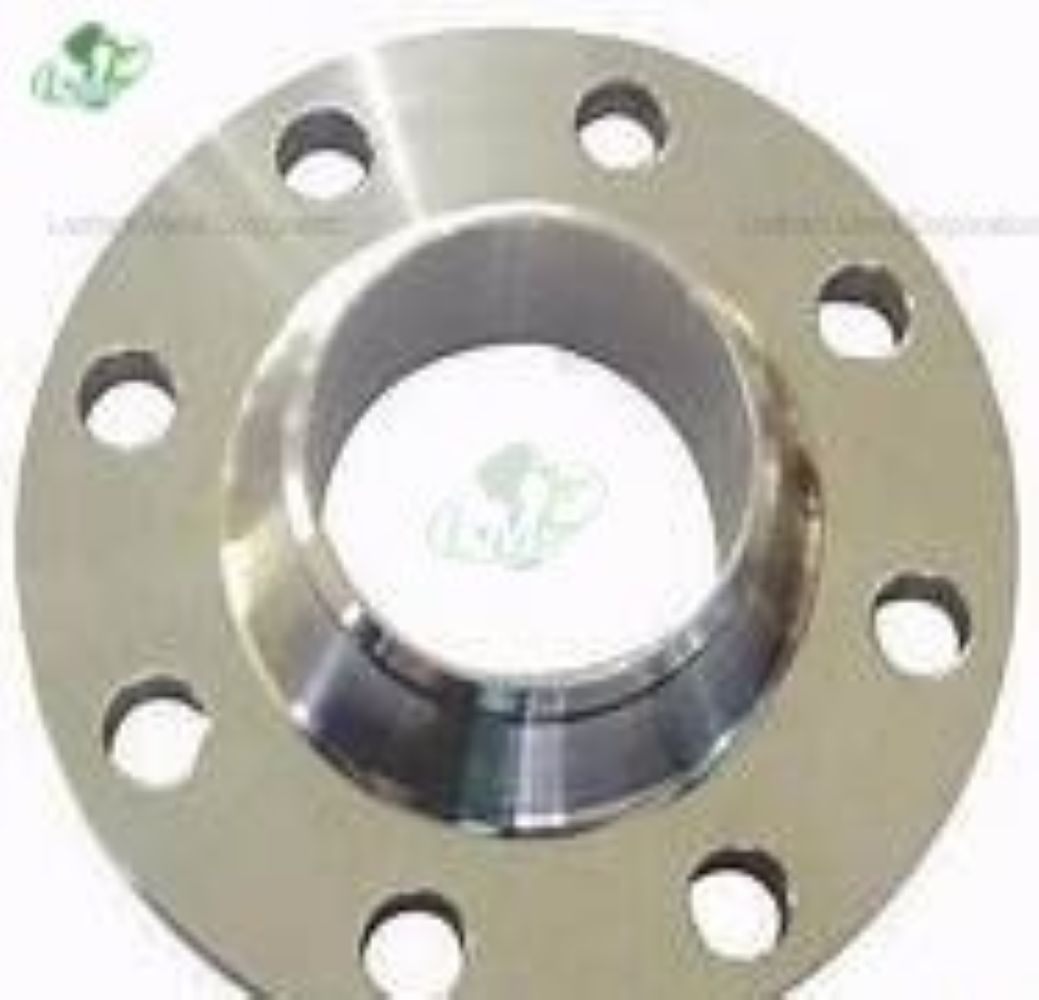DIN 2627 Super Duplex Steel flanges PN 400 are robust, high-performance blind flanges engineered for extremely demanding applications requiring exceptional strength, corrosion resistance, and reliability under ultra-high-pressure conditions. Designed according to the DIN 2627 standard, these flanges are primarily used to isolate sections of piping systems, especially in environments that involve aggressive media such as seawater, acidic chemicals, and high-temperature fluids. With a PN 400 pressure rating (400 bar / 5800 psi), these flanges are suitable for critical systems where both mechanical strength and corrosion resistance are vital. Ladhani Metal Corporation is a globally recognized supplier and exporter of Super Duplex DIN flanges, offering products that meet or exceed international quality, safety, and performance standards for extreme-service applications. Pressure Rating: • PN 400 (400 bar / 5800 psi): Designed for high-pressure operations in chemically aggressive and mechanically demanding environments. Flange Type: • Blind Flanges Flat, solid flanges without a bore used to seal the end of piping systems. Ideal for temporary shutdowns, pressure testing, or future system expansion. • Flat Face (FF) Flanges Feature a flat sealing surface, suitable for use with full-face gaskets and flat mating components to ensure consistent and effective sealing under pressure. Super Duplex Steel Grades and Composition: Super Duplex 2507 (UNS S32750) • Chromium (Cr): 24 – 26% • Nickel (Ni): 6 – 8% • Molybdenum (Mo): 3 – 5% • Nitrogen (N): 0.24 – 0.32% • Iron (Fe): Balance Applications: Exceptional corrosion resistance in seawater, brines, and acidic environments. Commonly used in offshore structures, desalination plants, and chemical processing systems. Applications of DIN 2627 Super Duplex Flanges PN 400: • Offshore Oil and Gas Platforms Used in topside and subsea installations exposed to high salinity, pressure, and harsh chemical environments. • Desalination and Water Treatment Plants Resistant to chloride-induced corrosion and fouling in seawater intake and brine discharge systems. • Chemical and Petrochemical Processing Ideal for aggressive process media such as chlorides, sulfur compounds, and acids at high temperatures and pressures. • Marine Engineering and Shipbuilding Excellent corrosion resistance in marine atmospheres, making them suitable for seawater cooling, ballast systems, and structural piping. • Pulp and Paper Industry Deployed in bleaching plants and alkaline recovery lines where strength and corrosion resistance are essential. • Power Generation and Nuclear Facilities Reliable under high-temperature and pressure cycles in superheated steam, feedwater, and condenser systems. Key Features: • Manufactured to DIN 2627 standard • PN 400 pressure class for ultra-high-pressure environments • Blind flange design for secure pipe end sealing or access closure • Flat face type for even gasket compression and leak-free performance • Available in Super Duplex 2507 (UNS S32750) and S32760 • Excellent resistance to pitting, crevice corrosion, and stress corrosion cracking • Twice the strength of conventional stainless steels • Widely used in offshore, marine, petrochemical, and water treatment industries • Custom options available: sizes, pressure ratings, face types, and finishes Conclusion: DIN 2627 Super Duplex Steel Flanges PN 400 by Ladhani Metal Corporation are designed to withstand the harshest industrial environments, providing unmatched corrosion resistance, mechanical strength, and sealing reliability. These flanges are ideal for mission-critical applications in offshore, marine, chemical, and energy industries. For technical assistance, custom fabrication, or detailed product specifications, contact Ladhani Metal Corporation and ensure your systems are protected by industry-leading flange solutions.
Send Message








